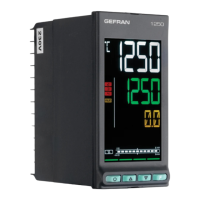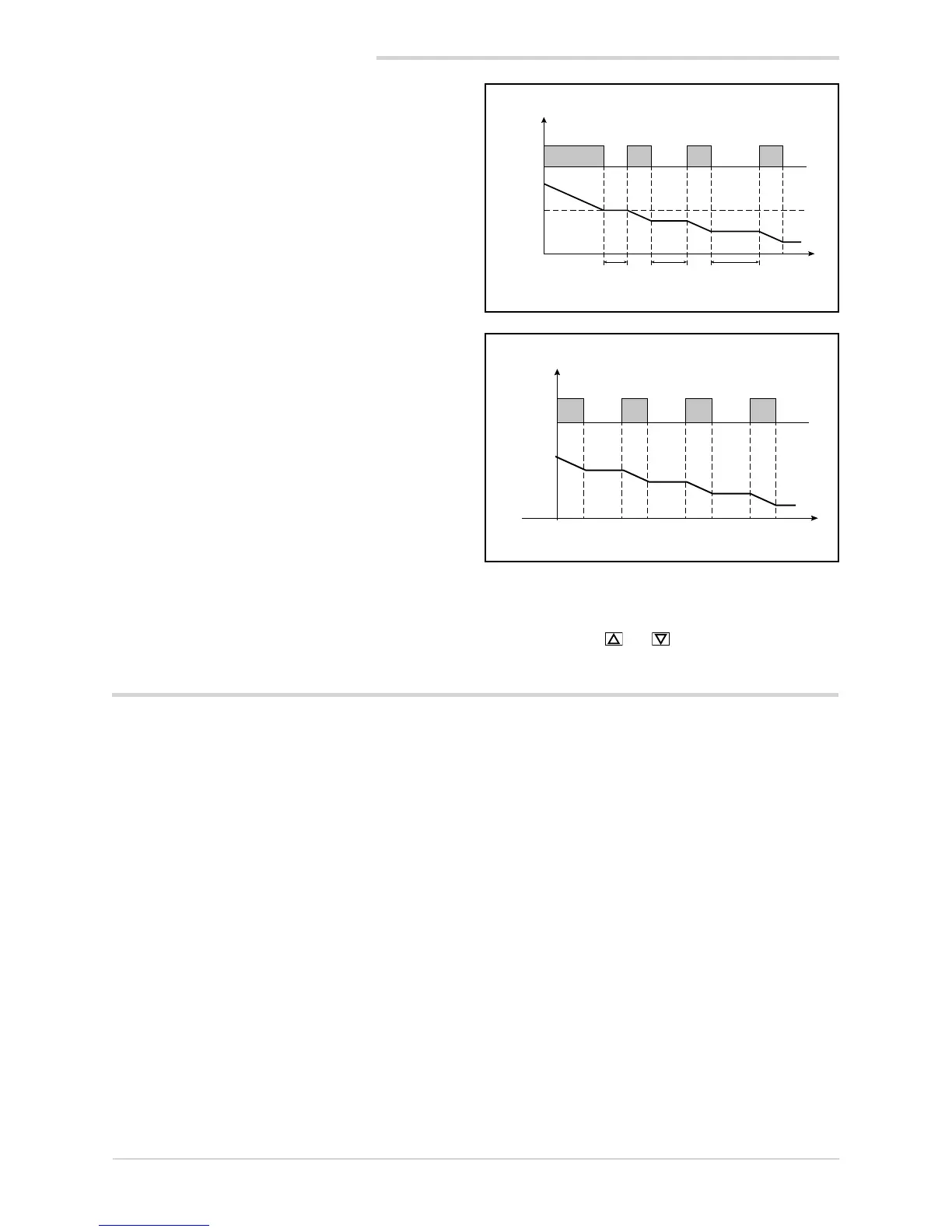154
Impulsive behavior with TIM.OF ≠ 0
With the controller in manual, setting the parameter KEY.
MO = On allows direct control of the valve open and close
commands via the and keys.
There are two setpoint approach modes:
• Non-impulsive behavior
Set TIM.HI = 0 and TIM.OF=0 for non-impulsive beha-
vior: every request greater than TIM.LO is continually
sent to the actuator via the V.OPEN / V.CLOS outputs.
The shortest pulse time is settable in TIM.ON as per-
centage of the “actuator time”, it is recommended to
set TIM.ON=TIM.LO
With power equal to 100.0% or to 0.0%, the correspon-
ding output remains on.
• Impulsive behavior
Set TIM.HI ≠ 0 and TIM.OF=0 for impulsive behavior.
every request greater than TIM.LO is sent to the actua-
tor via the V.OPEN / V.CLOS outputs with impulses ha-
ving a duration of TIM.ON.
TIM.HI defines the deviation within which the move-
ment becomes pulsing.
With power equal to 100.0% or to 0.0%, the correspon-
ding output remains on.
With TIM.OF ≠ 0, every request greater than TIM.LO is
sent to the actuator via the V.OPEN / V.CLOS outputs
with impulses having a duration of TIM.ON and TIM.OF.
With power ≤ 10.0%, or ≥ 90.0%, the impulses are inde-
pendent of TIM.LO.
With power equal to 100.0% or to 0.0%, the correspon-
ding output remains in modulation.
5.15. Energy counter
The Energy Counter function lets you calculate the total
energy transferred to the load and estimate its cost.
The Energy Counter function can be linked to a single output
of the controller.
The output must be relay, logic or triac.
The following information can be displayed on the user con-
figuration menu:
• Load current (parameter CURR). This is shown imme-
diately if the option CT1 or CT1 + CT2 is present, or
is calculated by using load power (parameter P.LOAD)
and line voltage (parameter V.LINE) values, using the
formula CURR = P.LOAD / V.LINE. CURR is indicated in
amperes and can have values from 0.0 to 99.9.
• Power on load (parameter OUT.KW), calculated in kW.
Power is calculated based on nominal power P.LOAD
(as a %) or on RMS current if the option CT1 or CT1 +
CT2 is present. OUT.KW can have values from 0.00 to
99.99.
• Elapsed time to equal the energy (parameter EN.TIM)
value between 0 and 999 hours
• Energy to the load (parameter OU.KWH) value betwe-
en 0.00 and 99.99 kWh.
5. Examples and applicative notes
• Totalizer energy transferred to load (parameter EN.KWH),
calculated in kWh. EN.KWH can have values from 0 to
9999. The counting of energy stops when it reaches the
maximum 9999 kWh to a maximum of 999 hours time
EN.TIM
• Cost of energy transferred to load (parameter EN.CST).
Cost is calculated based on the nominal cost of ener-
gy per kWh (parameter E.COST), using the formula
EN.CST = EN.KWH × E.COST. EN.CST can have
values from 0 to 9999.

